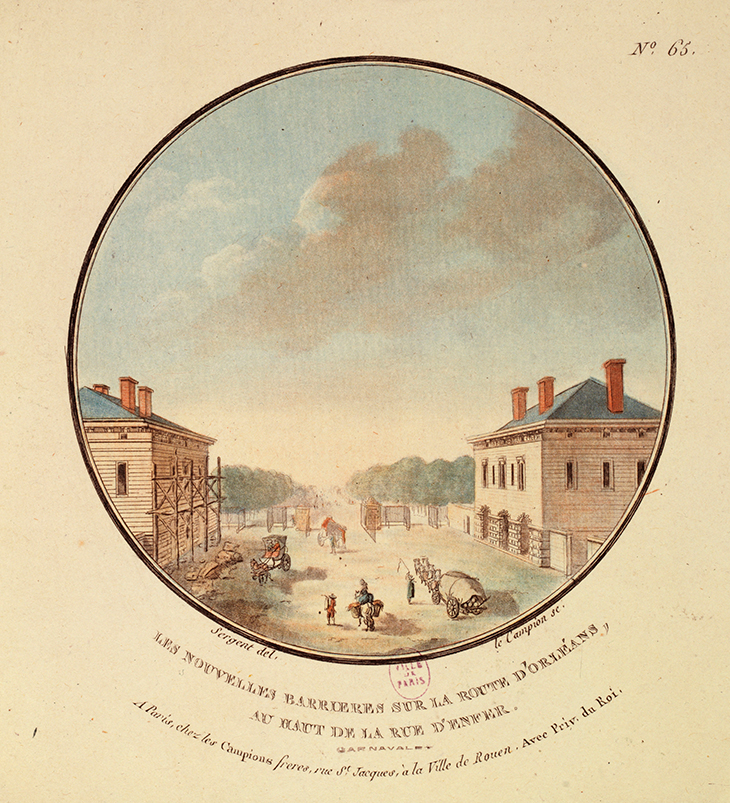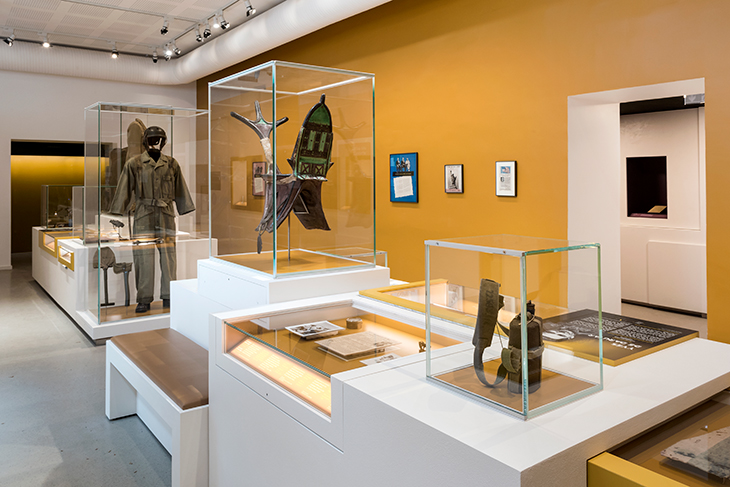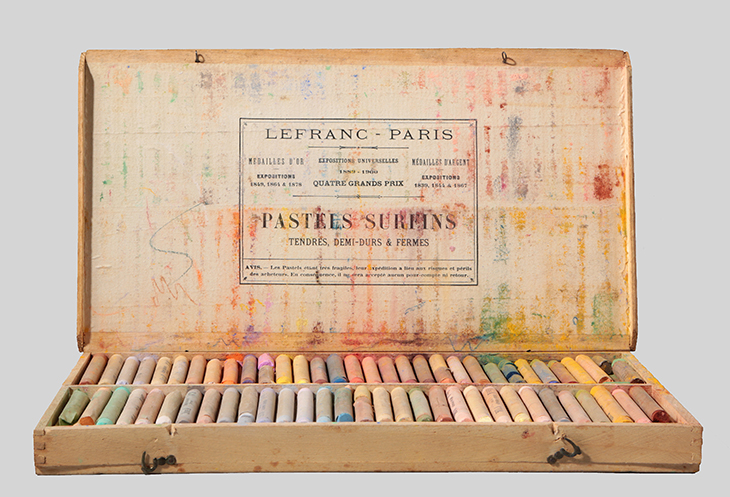In the last days of the Ancien Régime, the French neoclassical architect Claude Nicolas Ledoux was commissioned to build 62 pavilions for the wall around Paris, which enforced a toll on goods entering the city. Only two of these slightly whimsical structures remain fully intact today: the Rotonde de la Villette in the east of the city and the Barrière d’Enfer in Montparnasse. The latter (the setting for the third act of Puccini’s La Bohème) consists of two identical pavilions situated opposite each other on the edge of the Place Denfert-Rochereau. One has long been known to tourists as the entry to the Paris catacombs. This summer, the other opened as the site of the new Musée de la Libération de Paris.
La Barrière sur la route d’Orléans showing Ledoux’s two pavilions of the Barrière d’Enfer. Image: Roger-Viollet (Paris Musées)

The core of this museum consists of separate collections of materials relating to two heroes of Charles de Gaulle’s Free French movement: the former préfet Jean Moulin, who played a key role in uniting the Resistance behind De Gaulle, and General Philippe Leclerc de Hauteclocque, who was the outstanding military leader of De Gaulle’s exiguous military forces. The two men never met and could not have been more different: Leclerc was a conservative soldier from Picardy, Moulin a left-wing civil administrator from Languedoc. Moulin was tortured while in Gestapo custody in June 1943 and did not live to see the Liberation he had helped make possible; Leclerc led the first Gaullist forces into liberated Paris on 25 August 1944.
Some of the material on show in this new museum was previously displayed in an inaccessibly situated location next to the eyesore that is Tour Montparnasse. The new site is not an arbitrary choice. It was in an air-raid shelter under the Ledoux pavilion that Henri Rol-Tanguy, leader of the Resistance forces in Paris, installed his command centre. At the end of their tour of the museum, visitors can descend the 100 steps down to view the command post.
In the previous museum, the material was badly presented and poorly lit; and the stories of Moulin and Leclerc were not linked in any coherent way. The new museum is not only located in a handsome, accessible and appropriate building but the material – photographs, archive footage, posters, letters, resistance tracts, interactive maps of occupied Paris – is also superbly displayed and excellently explained (all labelled in both French and English). It weaves together the parallel stories of Leclerc and Moulin while situating them in their historical context. There are sections on Paris in the interwar years, on the defeat of 1940, on daily life in Occupied Paris, on the resistance and collaboration, and so on. This overarching narrative is made more vivid and concrete by being linked to the experiences of specific individuals whose stories are picked out for us.
A gallery of the museum, with vitrines showing objects used by members of the Resistance. Image: © Pierre Antoine

As for the two Gaullist heroes who are the central subject of the museum, some of the material on Moulin is especially poignant: a short home movie of him on holiday in the 1930s; the matchbox in which he took to France the microfilm containing his instructions to the Resistance from De Gaulle; the final letter he wrote to his sister only days before his arrest. Moulin was an amateur painter and passionate art collector, and one of his covers under Occupation was running an art gallery in Nice. The exhibition also contains a few paintings from his personal collection and a poster for an exhibition he organised of paintings by Picasso, Utrillo, Renoir and others.
Box of pastels belonging to Jean Moulin. Image: © Lyliane Degrâces-Khoshpanjeh / musée de la Libération de Paris – musée du général Leclerc – musée Jean Moulin (Paris Musées)

As a teacher of this period of French history at university, I will now make this museum a central part of my annual visit to Paris with my students. But it should be an obligatory port of call for any visitor to the city interested in this dramatic and fascinating period of French history.



